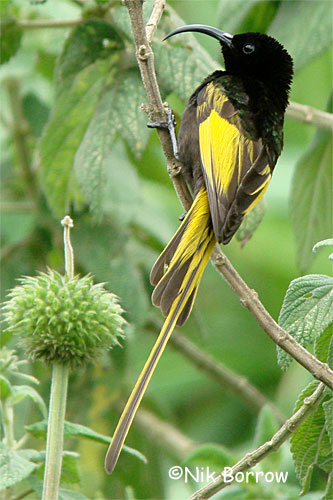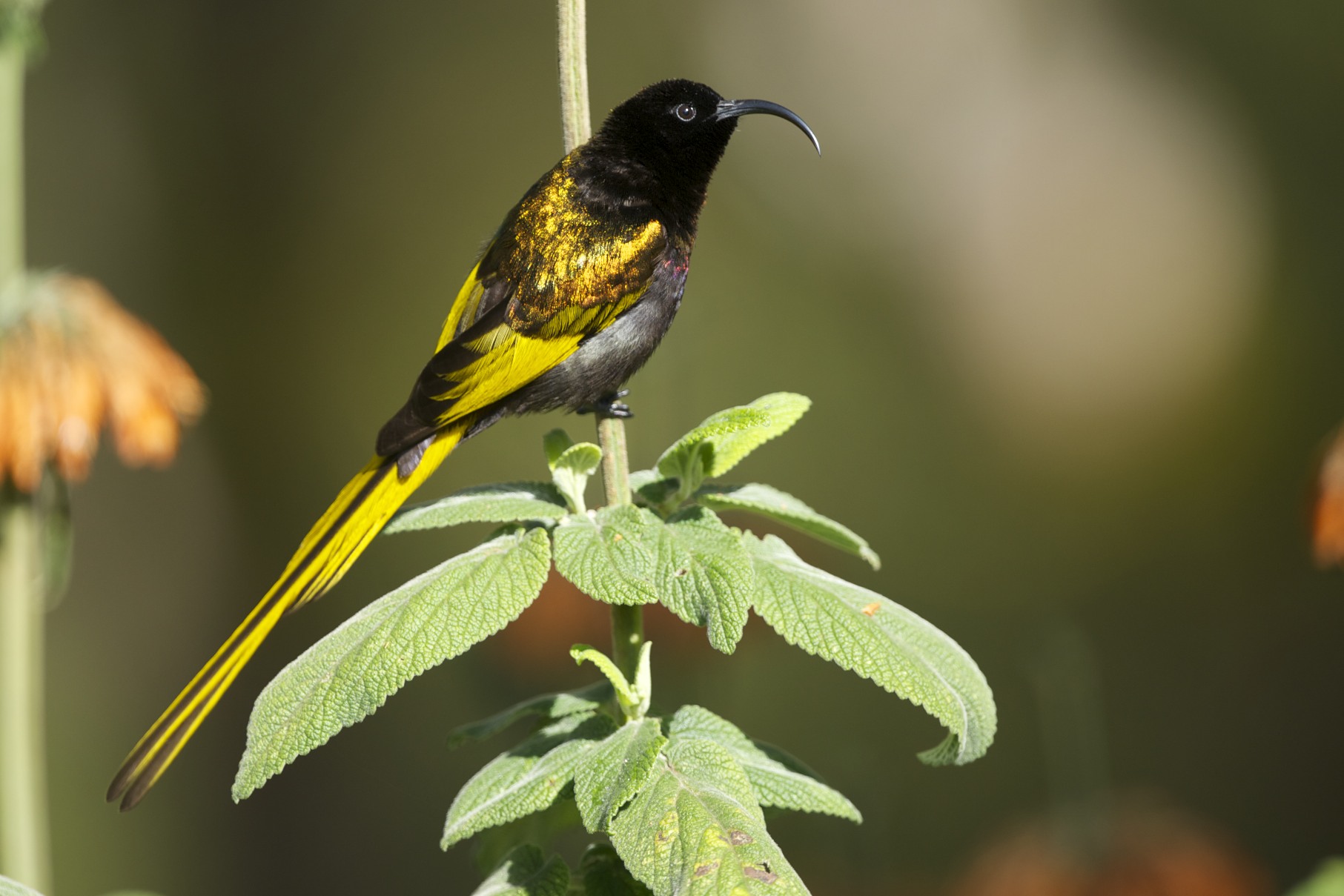
Drepanorhynchus reichenowi
SUBFAMILY
Nectariniinae
TAXONOMY
Drepanorhynchus reichenowi Fischer, 1884, Lake Naivasha, Kenya.
Three subspecies.
OTHER COMMON NAMES
English: Golden-wing sunbird; French: Souimanga а ailes
dorйes; German: Gelbschwanz-Sichelhopf; Spanish: Nectarina
de Alas Doradas.
PHYSICAL CHARACTERISTICS
Male 6.3–9.4 in (16–24 cm), female 5.5–5.9 in (14–15 cm); male
0.45–0.62 oz (12.8–17.5 g), female 0.39–0.56 oz (11–15.9 g).
Mostly chestnut-brown with decurved bill and yellow-golden
wing and lateral tail feathers. Two elongated feathers extended
from tail.
DISTRIBUTION
D. r. lathburyi: northern Kenya on isolated mountain ranges;
D. r. reichenowi: southern and western Uganda, western and
central Kenya, mountains in northeastern Tanzania; D. r. shelleyi:
highlands of Democratic Republic of the Congo northwest
of Lake Tanganyika.
HABITAT
Grasslands, clearings, forest edges, and gardens in highlands
above 3,900 ft (1,200 m).
BEHAVIOR
Altitudinal migrant, following flowering seasons. Sometimes
forms large feeding flocks at nectar sources. Has groove in
crown that collects pollen. Territorial; can obtain three-quarters
of energy needs from within territory. Song consists of
short twittering and high-pitched “chi-chi-chi.”
FEEDING ECOLOGY AND DIET
Associated in particular with lion’s claw flower (Crotalaria agatiflora)
and Leonotis spp. Feeds from aloes and jacarandas, also
on insects that are sometimes caught in flight.
REPRODUCTIVE BIOLOGY
Single white egg, mottled with gray-brown, laid in globular
nest made of grass and other plant material with porch over
entrance hole.
CONSERVATION STATUS
Not threatened.
SIGNIFICANCE TO HUMANS
None known.
Photo Gallery of - Golden-winged sunbird




 Animalia Life
Animalia Life